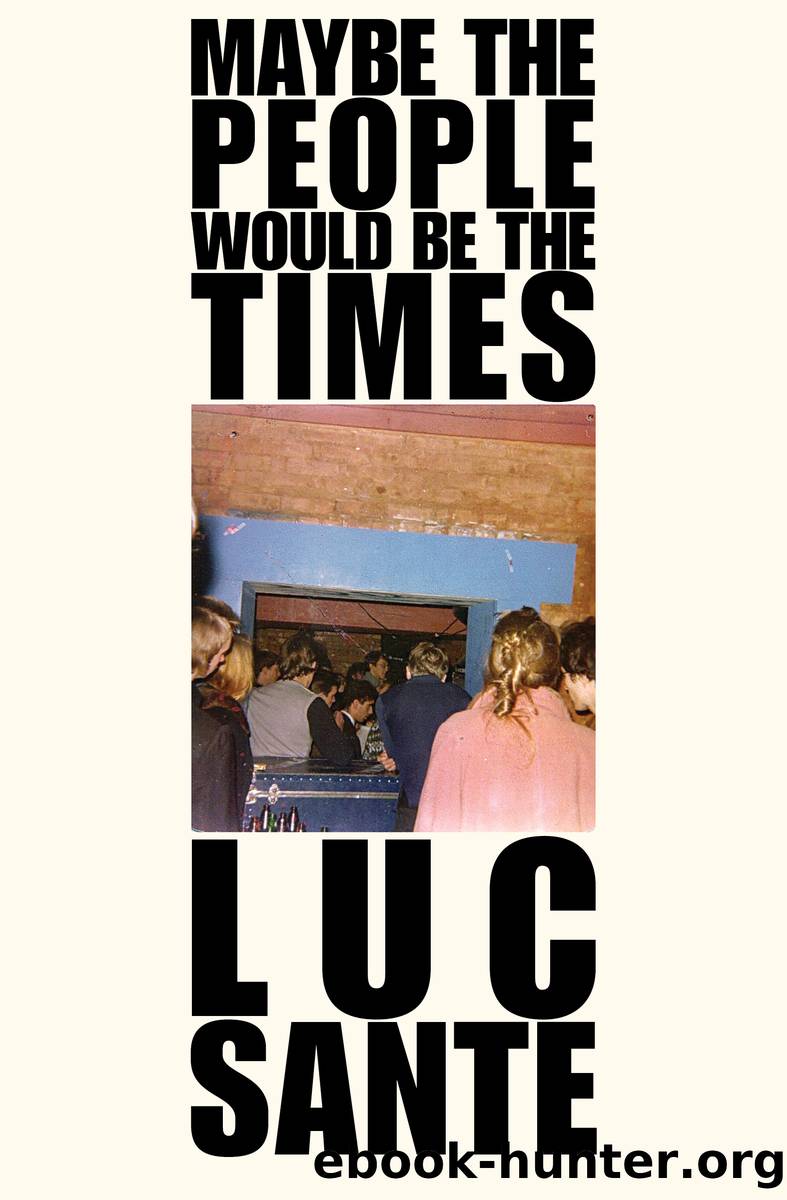Maybe the People Would Be the Times by Luc Sante

Author:Luc Sante
Language: eng
Format: epub
Publisher: Verse Chorus Press
Published: 2020-09-18T12:51:08+00:00
The Orphan
It is fitting that Lynd Wardâs six books are the first graphic novels to be published by the Library of America. For one thing, they really are graphic novelsâno term describes his works, published between 1929 and 1936, as accurately as that term, which only came into general use within the last two decades. They have the scope, breadth, and ambition of novels, and yet they are made up entirely of wood engravings; epigraphs and chapter headings aside, they contain no words. In addition, their formatâa single image per right-hand page, with the facing page left blankâis ideal for the pocket-Bible size of the volumes. George Herriman and Winsor McCay and E. C. Segar belong in the Library as well, but the dimensions would require reading them with a magnifying glass.
Wardâs work is singular, at least in American culture, and until recently orphaned. Although his first book, Godsâ Man, managed to sell 20,000 copies in four years despite being published the week of the 1929 Wall Street Crash, he has never really become a household word. His subsequent books did not circulate as widely, and his books were only ever books, were never serialized in magazines or newspapers. A superficial glance at his graphic style risks confusing it with that of his contemporary Rockwell Kent, although he is an Expressionist to Kentâs Precisionist. Most people probably know him, if at all, from his later illustration work, especially in two enduring childhood classics, Esther Forbesâs Johnny Tremain (1943) and Hildegarde Swiftâs The Little Red Lighthouse and the Great Gray Bridge (1942). But Godsâ Man in particular has proved resilient, having been reprinted at fairly consistent intervals. I myself first found out about it from The Last Supplement to the Whole Earth Catalog (1971; cover by R. Crumb), which reproduced four panels: a painter at work embraces his model, then discovers to his horror a dollar sign tattooed on her shoulder; she rewards him with a fearsome rictus of a smile. That half-page was enough to send me off in search of the original, which took me a while.
What I saw in those four panels was a hint of a narrative, dramatically carved, that appeared at once beguiling, frightening, and unaccountably familiar (I was a teenager at the time). The tattoo impressed me with its cartoon-language directness; the smileâa row of even white teeth in an open mouth, surmounted by eyes entirely obscured by pools of shadowâfrankly terrified me; but what appeared to be calling to me from some forgotten realm was the texture of wood engraving itself, especially the striations carved by the artistâs burin to fill in for the range of tones between black and white. Those hatch-marks may have been merely an aspect of making a flat wooden surface capable of transferring an inked drawing onto paper, but to my eye they were vibrations, throbbing with the vitality, sometimes menacing, of every represented object, body, landscape, and event. On a wordless page, they were nearly audible.
Ward (1905-1985) was no cartoonist.
Download
This site does not store any files on its server. We only index and link to content provided by other sites. Please contact the content providers to delete copyright contents if any and email us, we'll remove relevant links or contents immediately.
Wonder by R.J. Palacio(8430)
Mastering Adobe Animate 2023 - Third Edition by Joseph Labrecque(3705)
Unlabel: Selling You Without Selling Out by Marc Ecko(3574)
Ogilvy on Advertising by David Ogilvy(3482)
Hidden Persuasion: 33 psychological influence techniques in advertising by Marc Andrews & Matthijs van Leeuwen & Rick van Baaren(3454)
Drawing Cutting Edge Anatomy by Christopher Hart(3437)
The Pixar Touch by David A. Price(3344)
POP by Steven Heller(3297)
The Code Book by Simon Singh(3055)
The Art of War Visualized by Jessica Hagy(2932)
Slugfest by Reed Tucker(2923)
The Curated Closet by Anuschka Rees(2896)
Rapid Viz: A New Method for the Rapid Visualization of Ideas by Kurt Hanks & Larry Belliston(2813)
Stacked Decks by The Rotenberg Collection(2796)
365 Days of Wonder by R.J. Palacio(2737)
The Wardrobe Wakeup by Lois Joy Johnson(2717)
Keep Going by Austin Kleon(2681)
Tattoo Art by Doralba Picerno(2582)
Tell Me More by Kelly Corrigan(2579)
